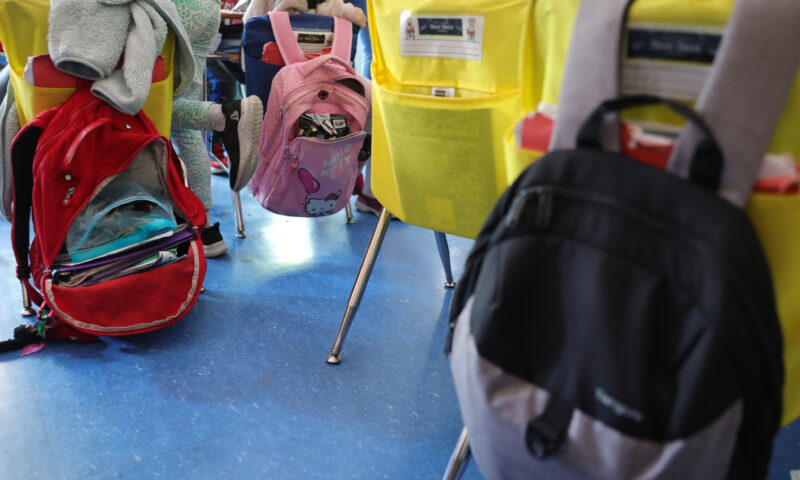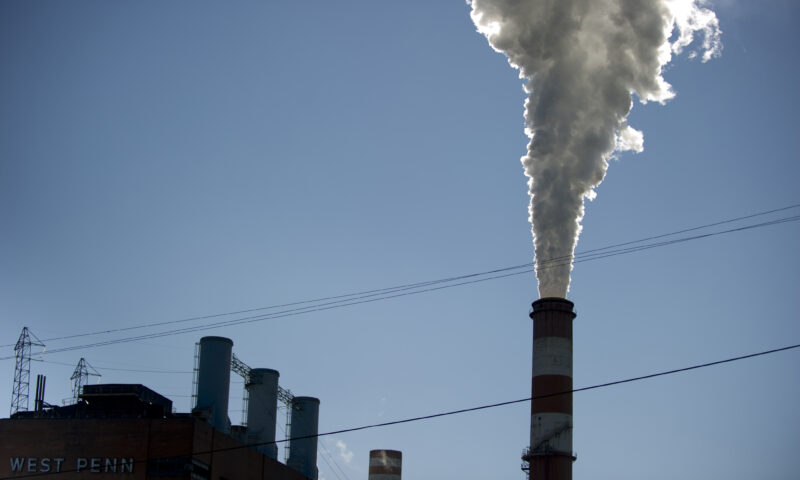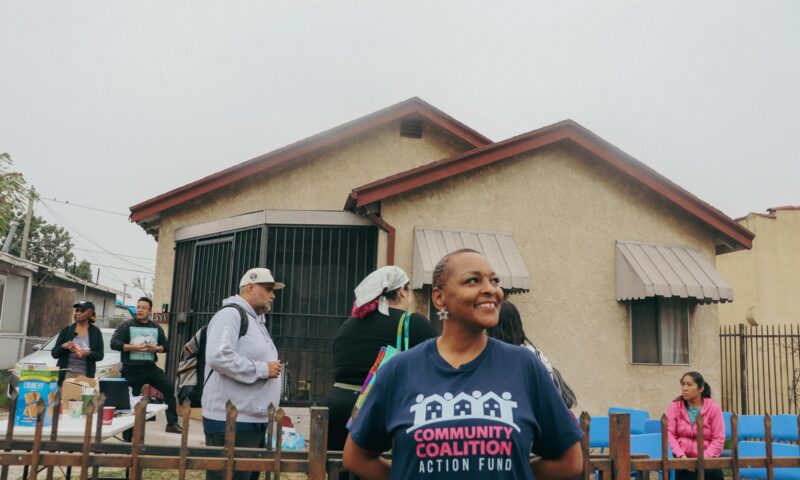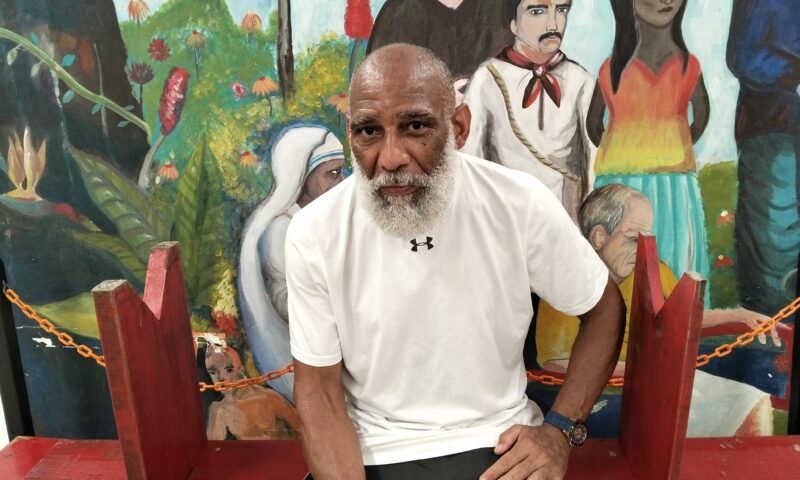Column - State of Inequality
U.S. Undoes Progress on Child Poverty as Spending Cuts Take Priority
The end of pandemic relief programs is returning millions of children to poverty.

Amid the ravages of the first two years of the pandemic in the U.S., a small light became visible: The government showed that it could choose to move millions of children and their families out of poverty.
It is no longer choosing to do so, instead allowing most COVID-related aid packages to expire. And as researchers feared, poverty in America is again soaring — reaching pre-pandemic heights and in some cases going higher.
Join our email list to get the stories that mainstream news is overlooking.
Sign up for Capital & Main’s newsletter.
“It confirmed that a lot of this is really just a choice,” said Kyle Moore, an economist who studies inequality for the Economic Policy Institute in Washington, D.C. “We had programs in place that demonstrably cut poverty, particularly child poverty. We allowed those programs to expire. And poverty went back up — a lot.”
Across the country, the expansion of the Child Tax Credit (CTC) — along with multiple rounds of stimulus payments, enhanced unemployment insurance and food assistance — drove poverty rates in 2020 and 2021 to some of the lowest on record, offsetting some of the worst of the pandemic’s economic effects, especially on lower-wage earners and families of color.
But according to the U.S. Census Bureau’s latest numbers, released in September, the Supplemental Poverty Measure rate jumped back up from 7.8% in 2021 to 12.4% in 2022. Child poverty more than doubled, from a record low 5.2% in 2021 to 12.4% last year. Experts say the Supplemental Poverty Measure provides a fuller accounting of poverty in the U.S. than the traditional rate because it accounts for cost of living and the impact of government assistance, and is adjusted both geographically and by family size.
California-specific figures from the Public Policy Institute of California likely will show similar escalations when they’re released this month. The center last year reported that expansion of the CTC and the CalFresh food assistance program (once known as food stamps) helped significantly decrease poverty rates in the Golden State through the first two years of the pandemic. Overall poverty dropped from 16.4% to 11.7% from 2019 to 2021, while child poverty was nearly halved, from 17.6% to 9.0%.
“Despite the economic shock of the pandemic, poverty in California actually declined because of major expansions to safety-net programs,” said Sarah Bohn, director of the PPIC’s Economic Policy Center.
That didn’t continue. The Biden administration tried but failed to extend the expanded CTC, which was originally included in the $1.9 trillion American Rescue Plan, as part of a new relief bill. Republicans in Congress argued that the benefit was unaffordable and that it discouraged people from looking for work. Democrats hailed the program, saying it kept 3.7 million American children out of poverty in December 2021 alone.
The expanded CTC increased the federal subsidy for households that qualified from $2,000 to $3,600 for every child under age 6, and from $2,000 to $3,000 for those age 6 to 17. It also broadened the recipient pool to include families that previously didn’t qualify because they paid no federal income tax.
Those enhanced subsidies, Moore said, were critical in Black and Latino households, where pandemic-related job losses were heavy and COVID cases kept many from working for extended periods. The poverty rate for Black children dropped from 20.6% in 2019 to 8.3% in 2021; it has since risen to 18.3%. For Latino children, the rate went from 20.3% to 8.4%, then back up to 19.5%.
The PPIC, along with the Stanford Center on Poverty and Inequality, has developed a California Poverty Measure that functions much like the federal one, and for two years it tracked a remarkably successful march on poverty. Among other findings last year, the PPIC said that without safety-net measures, child poverty in California would have skyrocketed to nearly 29% during the pandemic.
In 2019, California created a Young Child Tax Credit of about $1,100 per year for families with children under 6 and income of less than $30,000. Combined with other tax credits, the benefits can exceed $8,000, and the Center on Budget and Policy Priorities found in 2021 that 90% of families receiving CTCs were using the money to pay for basic necessities.
It was the expansion of the CTC that truly drove down poverty during the pandemic, Moore said. The rising poverty rates being reported now underscore how critical the aid actually was.
“We always have the capability to do this — and outside of a crisis or a pandemic,” Moore said. “Poverty isn’t any less severe for the folks who are experiencing it just because we’re not in a crisis.”
Copyright 2023 Capital & Main

-

 The SlickNovember 14, 2025
The SlickNovember 14, 2025Can an Imperiled Frog Stop Oil Drilling Near Denver Suburbs? Residents Hope So.
-

 Latest NewsNovember 19, 2025
Latest NewsNovember 19, 2025How Employers and Labor Groups Are Trying to Protect Workers From ICE
-

 Column - State of InequalityNovember 13, 2025
Column - State of InequalityNovember 13, 2025Barring a Sharp Shift, Health Insurance Costs Will Skyrocket
-

 Latest NewsNovember 18, 2025
Latest NewsNovember 18, 2025Future of Special Education at Risk, Teachers Say, as Trump Moves to Cut Staff and Programs
-

 The SlickNovember 18, 2025
The SlickNovember 18, 2025After Years of Sparring, Gov. Shapiro Abandons Pennsylvania’s Landmark Climate Initiative
-

 Latest NewsNovember 17, 2025
Latest NewsNovember 17, 2025In South L.A., Black and Latino Neighbors Unite Against ICE as Systems Fail
-

 Column - State of InequalityNovember 21, 2025
Column - State of InequalityNovember 21, 2025Seven Years Into Gov. Newsom’s Tenure, California’s Housing Crisis Remains Unsolved
-

 StrandedNovember 25, 2025
StrandedNovember 25, 2025‘I’m Lost in This Country’: Non-Mexicans Living Undocumented After Deportation to Mexico

